- Home
- TV History
- Network Studios History
- Cameras
- Archives
- Viewseum
- About / Comments
Skip to content
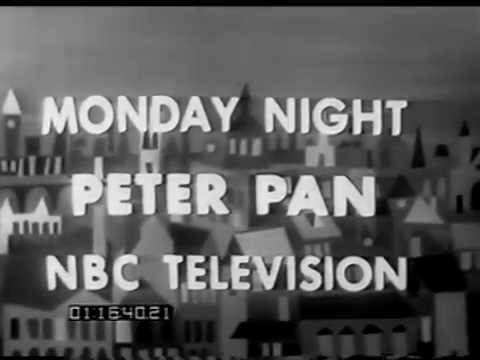

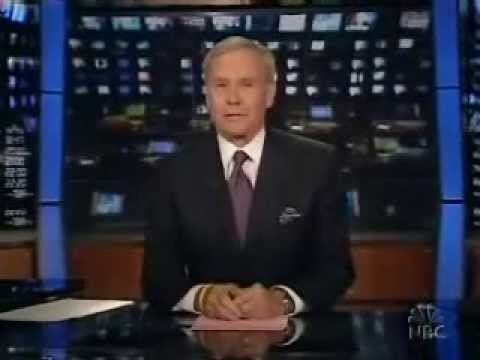







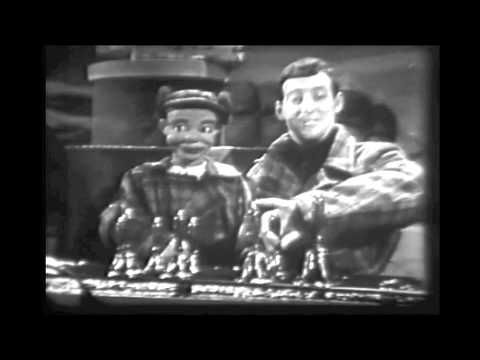



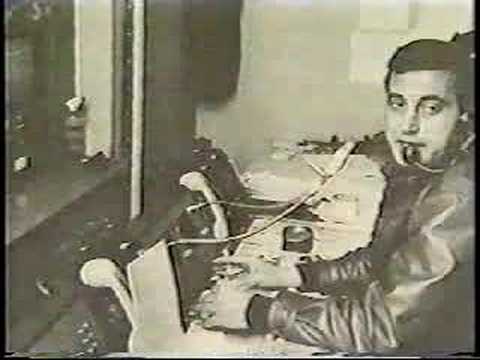

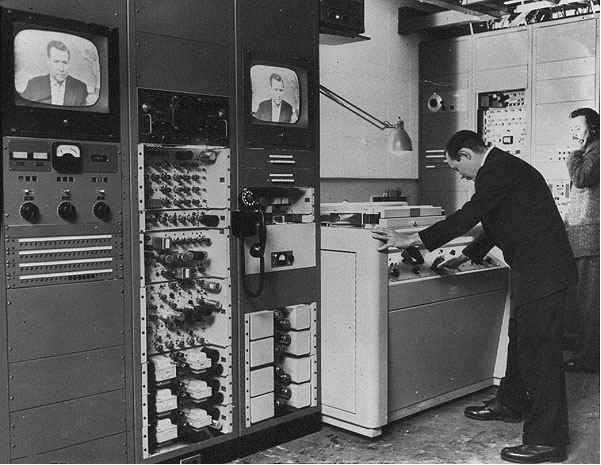

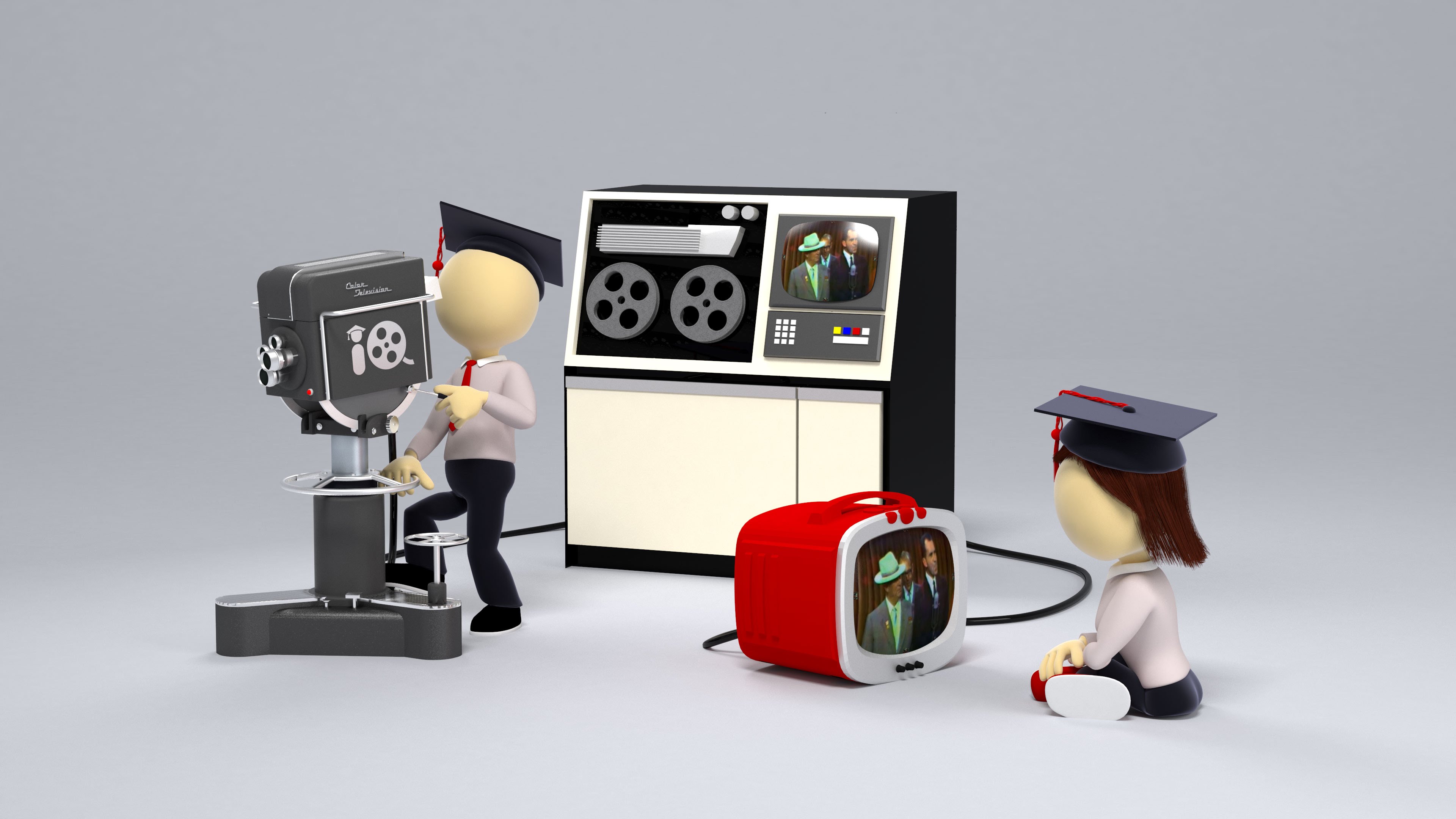

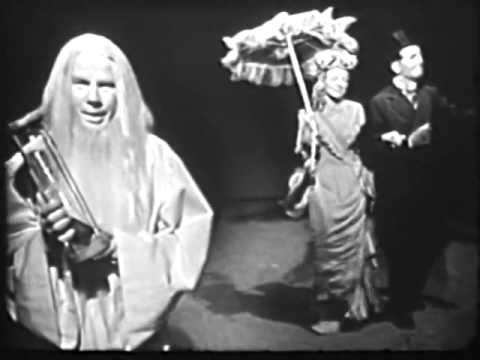









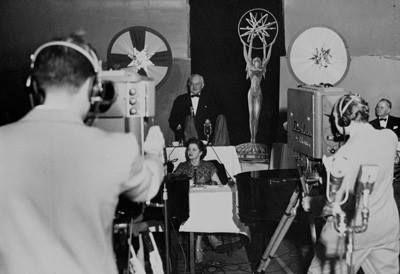



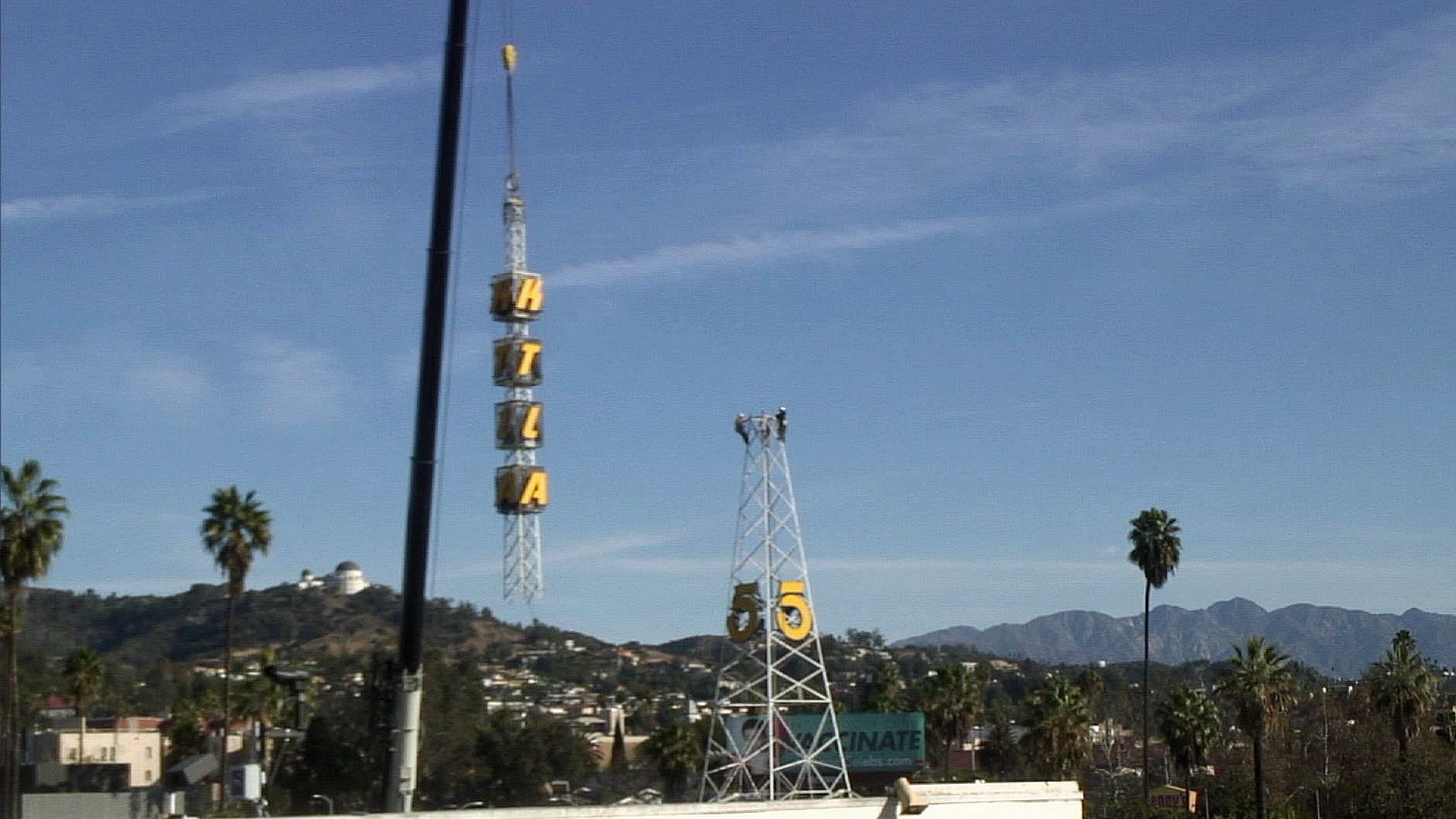

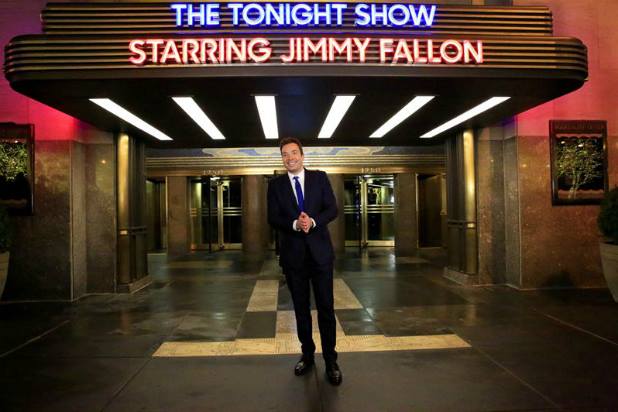

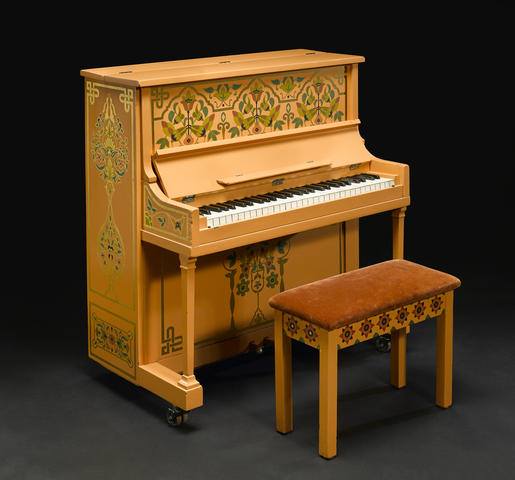

Posts in Category: TV History
Page 46 of 136
« Previous
1
2
3
4
5
6
7
8
9
10
11
12
13
14
15
16
17
18
19
20
21
22
23
24
25
26
27
28
29
30
31
32
33
34
35
36
37
38
39
40
41
42
43
44
45
46
47
48
49
50
51
52
53
54
55
56
57
58
59
60
61
62
63
64
65
66
67
68
69
70
71
72
73
74
75
76
77
78
79
80
81
82
83
84
85
86
87
88
89
90
91
92
93
94
95
96
97
98
99
100
101
102
103
104
105
106
107
108
109
110
111
112
113
114
115
116
117
118
119
120
121
122
123
124
125
126
127
128
129
130
131
132
133
134
135
136
Next » 

ULTRA RARE! 1956 ‘Peter Pan’ Promo
On December 2, 2014
- TV History, Viewseum
ULTRA RARE! 1956 ‘Peter Pan’ Promo
As we just read in this morning’s first story, the first television production of ‘Peter Pan’ was March 7, 1955. On January 9, 1956, NBC Brooklyn did it again…live and in color. Here is a promo for the second broadcast that fortunately was captured from inside a kinescope of the January 6, 1956 ‘Ernie Kovacs Show’. Thanks to Ben Model for the capture and to Randy West for bringing this to my attention. Enjoy and share! -Bobby Ellerbee
This is the promo that aired on NBC in January 1956 for “Peter Pan” starring Mary Martin. Sourced from a kinescope of “The Ernie Kovacs Show” from Jan 6, 1956


December 1, 2004…Tom Brokaw Steps Down At NBC
On December 1, 2014
- TV History
December 1, 2004…Tom Brokaw Steps Down At NBC
On this day in 2004, NBC anchor Tom Brokaw made he final appearance as anchor on ‘NBC Nightly News’. He began his run on the show in April 1982.
Although he has already coined the phrase “the greatest generation”, he does not use the term when he talk about them with great respect. At the end, Bob Hope sings a short custom version of “Thanks For The Memories”. Thanks Tom! I remember you from your days at WSB in Atlanta. Enjoy and share! -Bobby Ellerbee
http://www.youtube.com/watch?v=JMxUzdep6p0
After bringing viewers the news for nearly 23 years, NBC News anchor, Tom Brokaw, gave his parting words on December 1st, 2004, expressing gratitude for what…


1950s EDGE OF NIGHT TV SOAP WITH COMMERCIALS
On December 1, 2014
- TV History
December 1, 1975…’The Edge Of Night’ Moves From CBS To ABC
This was the first serial in television history to switch networks. By the way, did you know the famous skyline in the opening is Cincinnati, Ohio as seen from Kentucky?
April 2, 1956 was a big day at CBS, as two of the first half hour daytime soaps debuted that day…’The Edge Of Night’, which came from Studio 64 (an old Dumont studio), and ‘As the World Turns’ which came from Studio 63.
At one point, ‘The Edge of Night’ audience was estimated to be more than 50% male, largely due to the show’s crime format and its late start time of 4:30 ET. In July 1963, the show was moved to 3:30 after CBS gave the 4:30 slot back to the affiliates. ‘The Edge of Night’ dominated the 3:30 slot even over otherwise-hit programs like NBC’s ‘You Don’t Say’ and ABC’s ‘Dark Shadows’ and ‘One Life to Live’. However, when the show moved to 2:30 on September 11, 1972, as per Procter and Gamble’s insistence upon running all of its shows in a continuous daily marathon, it slid from a solid #2 in the Nielsen ratings to near-last.
The last CBS episode on November 28, 1975, ended with the discovery that Nicole Travis Drake was alive. She had been presumed dead in an explosion 18 months earlier while on a boating trip with her husband Adam Drake. ABC aired the show beginning on December 1, with a 90-minute premiere episode that picked up where CBS had left off.
Below is a full CBS episode that I think is from around 1958. Very few of the CBS shows survived, so this is a rarity. Enjoy and share. -Bobby Ellerbee
By the way, the only other soap to do this would be the Procter & Gamble’s ‘Search for Tomorrow’, which would move from CBS to NBC in 1982.
Having Your Cake, And Eating It Too…Live, But With Instant Replay
On December 1, 2014
- TV History
Having Your Cake, And Eating It Too…Live, But With Instant Replay
After posting the story yesterday on the anniversary of the first Instant Replay, there were some comments on how naked a game would be without what we’ve all become accustomed to. As I read those and thought about how much fans at the game miss, this great photo from or friend Craig Harper came to mind.
This is Saturday’s game between Baylor and Texas Tech at AT&T Stadium in Arlington, Texas…where the Cowboys play. Now THIS is how to really enjoy a football game. By the way, Baylor won. Enjoy and share! -Bobby Ellerbee
ABC Hollywood & Vine Studio History Update…Firm Date Located
On December 1, 2014
- TV History
ABC Hollywood & Vine Studio History Update…Firm Date Located
At the link below is my original story from November 19th in which I speculated on the date ABC took it over, but thanks to Steve Dichter, we now have a firm date. This clipping is from the July 4, 1949 issue of Broadcasting – Telecasting Magazine.
The third studio mentioned would become Studio A, a large radio studio that could also handle occasional television shows. The smaller B and C were radio only but could seat 300 each. Thanks to Steve for the new info that has been so illusive. Enjoy and share! -Bobby Ellerbee
https://www.facebook.com/permalink.php?story_fbid=756753684362183&id=189359747768249


A Scrapbook Memory, And A BIG Surprise!
On November 30, 2014
- TV History
Given what you are about to read, it makes what you are about to see all the more amazing!
Did you know that long before the Muppets were created, Paul Winchell had come up with moving arms on Jerry Mahoney and Knucklehead Smiff? It’s true, and became necessary when he came to NBC television in primetime from 1950 till ’54. He created an “armed” version of each dummy and hired a very capable assistant to do the hand work.
At 22:55 on this video, you’ll see Jerry’s hands and arms come to life, and he and Paul play the Christmas bells while singing “Jingle Bells”…in many ways, this is simply brilliant work! By the way, there’s a great animated Camay soap add here and the NBC close. The ear muff piece at the front is fun too. How very clever.
After his prime time show on NBC, Winchell had other hit TV shows and Carol Burnett is reported to have made her television debut with Paul in 1955. He also invented a working artificial heart long before the first transplants. Enjoy and share! -Bobby Ellerbee


A Tribute To Instant Reply Inventor…Director Tony Verna
On November 30, 2014
- TV History
A Tribute To Instant Reply Inventor…Director Tony Verna
This video from WCAU in Philadelphia has some very interesting footage at the start from the 1985 Live Aid Concert with Tony Verna directing the US portion of the world wide broadcast.
WCAU is where he started and as you’ll see, he blazed quite a trial. Anyone work with him? Got stories to share? Enjoy and share. -Bobby Ellerbee
http://www.youtube.com/watch?v=g3_8Z6Aotp8
WCA Tribute to Tony Verna, the inventor of the Instant Replay


The First Instant Replay…Thanks to CBS Director Tony Verna
On November 30, 2014
- TV History, Viewseum
The First Instant Replay…Thanks to CBS Director Tony Verna
The first isolated camera and a “borrowed” Ampex VR 1000 brought life to a new element of broadcasting that would forever change football and sports coverage.
The following account of how it came to be is from “ESPN College Football Encyclopedia: The Complete History of the Game”.
Dec. 7, 1963: The Birth of Instant Replay
Ask football fans if instant replay has its roots in the college or the professional game and most will go with the pros. But those who tuned in to the Army-Navy game on CBS on Dec. 7, 1963, know better.
When director Tony Verna, a Philadelphia native, returned to his hometown to direct the Army-Navy game that year, he arrived with a unique plan and a giant, 1,200-pound tape machine he had unplugged and transported from the CBS network control room at Grand Central in New York. Unbeknownst to all but a handful of
CBS executives and his crew, Verna was going to attempt to give viewers an immediate second look at a play.
“Video replay” was Verna’s unofficial name for the yet-to-be unveiled and considerably risky innovation. Risky because at that time the Army-Navy game was the showcase game in college football. In this pre-Super Bowl era, there was no grander stage in televised sports than the annual clash between the Cadets and Midshipmen. And in
1963, the stakes were even higher. Millions of Americans would be tuning in to the high-profile military rivalry game because of the assassination of President John F. Kennedy 16 days earlier.
For Verna, the genesis for the idea came years before when, as a twenty something wunderkind recently hired by CBS executive Tex Schramm, he worked on that network’s telecasts of the 1960 Rome Olympics. The network aired the entire Olympics on tape delay — after the tape was flown across the Atlantic to New York. It was then
that Verna learned videotape possesses two audio tracks.
For his special replay, he would use one track for crowd noise, the other for a simple cue system that would help locate the correct spot on the tape. One solid, clean beep would indicate a team going
into a huddle; two clean beeps would indicate a team breaking a huddle.
Several glitches occurred during his first attempts at fusing his taped technology with the game in progress. His monolithic tape machine was spitting out seven to nine seconds of video hash, indecipherable, cluttered pictures, before locking into a clear shot of game action. Occasionally, his machine didn’t work at all. Instead of football
action, the monitor would reveal what was already on the tape, sometimes a scene from ‘I Love Lucy’ or a Duz detergent commercial.
For three nervous quarters, Verna peered into his monitor and studied his two guinea pigs, Navy quarterback Roger Staubach and Army counterpart Rollie Stichweh. Verna had assigned one camera to follow only the two signal-callers, primarily because Staubach was so skilled with his ball-handling and fakes that most cameramen couldn’t
keep up with him. Although Staubach was the winner of the 1963 Heisman Trophy, it was Stichweh who made television history that day.
Stichweh faked to an Army halfback before running into the end zone for a one-yard touchdown, Army’s last in a 21-15 loss. The requisite beeps sounded in the production truck. Words passed through
cables and into headsets. Seconds later, a clear image of Stichweh and the Army offense appeared on the monitor. Verna pulled the trigger and threw the picture on air.
“Here it comes,” he warned play-by-play announcer Lindsey Nelson, to whom he had revealed his intentions only hours earlier, during the taxicab ride to Philadelphia’s Municipal Stadium. Nelson didn’t even have time to forewarn his audience that they would be witnessing television history. Most important, though, Stichweh “rescampered”
into the end zone and the very first instant replay went off without a
technical hitch.
So as not to confuse viewers, Nelson alerted his audience to what they’d just seen: “This is not live! Ladies and gentlemen, Army did not score again!”
During the game, Schramm phoned Verna in the truck. “My boy,” Schramm told Verna, “what you have done here will have such far-reaching implications, we can’t begin to imagine them today.”
In fact, during the early days of the innovation following the 1963 Army-Navy game, the phenomenon became so popular that viewers demanded to see it during practically every sporting event, but unfortunately, there weren’t enough tape machines to go around.
Schramm’s words proved to be prophetic. In the ensuing decades, instant replay – Verna’s not certain which of two announcers, Ray Scott or Pat Summerall, actually named his invention – became a cornerstone component of all sports telecasts.
In the video below, we see Verna describe this and get an interesting glimpse of a CBS TK41 in action from stock footage. Enjoy and share! -Bobby Ellerbee
November 30, 1956…First Videotape Delayed Broadcast, CBS Television City
On November 30, 2014
- TV History
November 30, 1956…First Videotape Delayed Broadcast, CBS Television City
CBS made broadcast history when they replayed ‘The Evening News With Douglas Edwards’ to the west coast. After recording the live feed coming down the network line from New York at 4 p.m. Pacific time, the program was played back three hours later.
In the large photo, we see CBS Engineer John Radis at the Ampex VRX-1000 playing back the show. On the phone to his right is Jim Morrison who is probably on the phone to the control room. I think a kinescope of the newscast was rolled simultaneously just in case there were problems with the tape playback.
This VRX-1000 is one of only 16 hand-built machines Ampex rushed to produce after debuting the VTR eight months before. The two racks of tube equipment to the left contain the electronics for the recorder.
Also pictured here is one of the first photos of the new CBS videotape room at Television City which was kept busy recording network feeds for time-zone delay and eventually, programs produced in the studios at Television City.
It would take over a year for CBS New York to get videotape machines due to a huge backlog, even though the networks got priority. In early 1958, 14 VR 1000 went into service as CBS Grand Central. NBC too had the bulk of their machines on the west coast but both CBS and NBC had two VTRs in New York which were mostly used for testing and engineering purposes.
In the color photo, we see the historic Douglas Edwards machine being retired in 1978. Early on, it had been fitted with RCA color modules as Ampex and RCA traded technology rights. RCA had developed color recording in 1954 and allowed Ampex to use it if they would allow RCA to use the Qaud recording head.
The final photo shows one of two Ampex VRX 1000s used at the first public demonstration at the NARTB convention in Chicago in April of ’56. In today’s next story…the history of the first instant playback. Enjoy and share! -Bobby Ellerbee


A Fascinating History Of Video Tape And Editing Milestones
On November 28, 2014
- TV History
A Fascinating History Of Video Tape And Editing Milestones
From Film Maker IQ, here is John Hess with another very interesting look at the development of videotape, it’s uses and the early editing process used. There are some great stories here and some little known facts, including some astounding financial considerations.
Did you know that ‘Laugh In’, which was the first extensivly edited video tape show, took 60 hours to cut and that there were 350 to 400 edits per show? Even the historic “Kitchen Debate” tapes in Moscow are covered here, so settle back and take this in. Enjoy and share! -Bobby Ellerbee
By the way, here is Part 2 and is more for the pro editors and engineers…it’s quite technical. http://www.youtube.com/watch?v=dhHQw5GrwxU
http://www.youtube.com/watch?v=TIVYeyWHajE
Trace the history of modern day film editing – starting with electronic engineers developing solutions for capturing and editing television through to the fi…


NBC Studio 8H…December 31, 1955, ‘Your Hit Parade’
On November 28, 2014
- TV History
NBC Studio 8H…December 31, 1955, ‘Your Hit Parade’
This clip starts at the introduction of the principal singers and just after the intro of Russell Arms, goes directly into Arms singing “Memories Are Made Of This” as a floor director. We’ll get a good look at the studio and something quite interesting around 4:05.
That’s when the cameraman on a Houston Fearless Panoram dolly gives the boom wheel a hard spin. The action is so free that even after he takes his hand away, the boom keeps going down quite gracefully. I have one of these and the action on mine is quite tight compared to this.
For music lovers, there are some other classics here, including “Autumn Leaves”, “Moments To Remember”, “Love And Marriage” and ‘White Christmas”. Despite with the clocks say, the show’s usual air time was 10:30 Saturday nights in 1955 and I think the “nearly midnight new years eve” times are just for the show’s theme that night. Enjoy and share. -Bobby Ellerbee
Yes, I’m Working Today” Pictures…MANY ADDED…See COMMENTS
On November 27, 2014
- TV History
Post Your “Yes, I’m Working Today” Pictures Here!
MANY ALREADY ADDED In Comments Section…Click There To See Them!
For our friends working parades or football games today, or even on duty at local stations and cable networks covering the news, editing video or in the control room…take some pix and post them in the comment section of this post. We’ll keep you company and we all know how it is to work on a holiday. The big eye never sleeps.
Here’s a great back in the day shot from John Schipp. I think this is NBC covering The Macy’s Parade in 1954. Happy Thanksgiving! -Bobby Ellerbee


The Macy’s Parade…How It’s Done & How It All Started
On November 27, 2014
- TV History
The Macy’s Parade…How It’s Done & How It All Started
Our friend Joel Spector will be playing all the music today for the broadcast, just like he has for over 25 years. That alone is a massive undertaking, but just one of many parts to one of television’s largest jigsaw puzzles.
This video should start at 1:44 and this segment covers the pre production and rehearsals, that start at midnight. At 21:54, the parade’s history segment starts. Mat Lauer says the television coverage began in 1948, but that’s not exactly right. Network coverage began in ’48 on CBS, but local experimental coverage was done by NBC in 1939. NBC also carried the parade locally in 1945, 46 and 47.
Although the parade began in 1924, it didn’t become widely known until after it was featured in the 1947 film, ‘Miracle On 34th Street’, which included footage of the 1946 festivities. At first, network coverage was only an hour long. In 1961, the telecast expanded to two hours, then 90 minutes beginning in 1962, before reverting to a two-hour telecast in 1965; all three hours of the parade were televised by 1969. The event began to be broadcast in color in 1960.
NBC airs the Macy’s Thanksgiving Day Parade live in the Eastern Time Zone, but tape delays the telecast elsewhere to allow the program to air in the same 9:00 a.m. to 12:00 p.m. time slot across the country. The afternoon playbacks started in 2008.
Just ahead, some early footage of the parade. Enjoy and Happy Thanksgiving! -Bobby Ellerbee
The Fun Has Begun At Macy’s! Actually, It Started At Midnight…
On November 27, 2014
- TV History
The Fun Has Begun At Macy’s! Actually, It Started At Midnight…
Here’s our friend Charlie Huntley on the job this morning about 3 AM. Charlie will be doing the honors on the host camera today, but for the past few weeks, and till December 4, he’s been rehearsing with about a dozen more top camera people for the ‘Peter Pan’ Live special.
As you’ll see in today’s next story, rehearsals start at midnight and all the marching bands do a run through at 3 AM. The balloons began to be inflated late yesterday afternoon near Central Park. Happy Thanksgiving! Break a leg Charlie! -Bobby Ellerbee
Anyone On Parade Duty Or Other Live Coverage Tomorrow? Got Pictures?
On November 26, 2014
- TV History
Anyone On Parade Duty Or Other Live Coverage Tomorrow? Got Pictures?
I know some of you will be and hope that you’ll get some pictures, especially at The Macy’s Parade. Please message them to me, or better yet, just add them here on this post.
Today, I hope those who have pictures from prior Christmas parades will post them here now in the comment section. These are from 1946 till 1963 and include Christmas parade shots from Macy’s, Inglewood CA, and the Mummer’s in Philadelphia. More on the photos. Enjoy and share your parade photos with us here. -Bobby Ellerbee
The Emmy Awards…The Early Years, Rare Video And Photos
On November 26, 2014
- TV History
The Emmy Awards…The Early Years, Rare Video And Photos
Here is the first video we have of the ceremonies on February 11, 1954. Vivian Vance is shown winning Best Supporting Actress and notice just before the 1:00 mark, the two KHJ cameras she walks between. With those long lenses, they had to be careful not to bump into each other.
This was live from the Hollywood Palladium and Ed Sullivan hosted the ceremonies broadcast by KHJ TV. Starting in March 7, 1955, NBC took over, and the awards show has been seen nation wide ever since. In ’55, Steve Allen and Dave Garroway hosted via split screen from LA and NYC.
In the photos, we see the first ever awards on January 25, 1949 at The Hollywood Athletic Club. It was covered locally by Don Lee’s KTSL for the few thousand viewers in LA that had a TV set. At the time, there were fewer than a million sets in use in the US. More details on the photos. Enjoy and share! -Bobby Ellerbee
Speaking Of Camera Drawings…Here’s An Interesting Twist From The UK
On November 26, 2014
- TV History
Speaking Of Camera Drawings…Here’s An Interesting Twist From The UK
The gallery of “kid camera” drawings this week reminded our friend Dicky Howett in England of something he did a few years ago as a competition of sorts…a challenge to see who could name the cameras he drew here. Can you name them? Take a look at the image and see if you can. You can grade yourself by checking the answers in the text block below. Enjoy and share! -Bobby Ellerbee
NAME THAT OLD (British) CAMERA!
(1). The EMI Emitron of 1937. Iconoscope type pick-up, high velocity picture tube. Needed bags of light. Optical twin lens inverted reflex viewfinder. Lightning reflexes required to operate. Live tv upside down!
(2). Emitron CPS Mk 1. 1947/48. Orthicon type pick-up tube. First used by the BBC on murky o.b.’s. Camera unsteady on highlights.
(3). Emitron CPS Mk 2. 1951. Oddball six lens turret. ‘Export’ 625-line hopeful. Shown at the 1951` London Festival of Britain in the Telekinema. (Trivia fans: This camera can be seen to advantage in the 1956 British movie ‘Simon & Laura’)
(4). Emitron CPS Mk 3. (10764) 1956. Introduced into Lime Grove
studio D. A large camera, it produced a softish ‘photographic’ picture which didn’t transfer well to the home receiver. ‘Baked Bean Tin’ lens cover concealed titchy lenses.Tilting viewfinder. Beer handle focus knob. This camera ended its days as a BBC tv optical standards converter.
(5). EMI 203. 4 ½” image orthicon. 1959 .The ‘green box’. Mistaken often by amnesiac cameramen for the 201, which was an EMI vidicon and half the size! But does size really matter, or have you forgotten?
(6). Marconi Mk 1. The first Marconi tv camera, introduced in 1949. A 3″ image orthicon camera based entirely on RCA blueprints of the RCA TK30 ‘field’ camera. The slightly later Marconi Mk 1B was used at the Coronation in 1953.
(7). Marconi Mk III 1955. Successful heavyweight 4 ½” image orthicon camera with tilting viewfinder and omnipresent beer-handle focus. Camera was the mainstay of 1950s monochrome British TV .
(8). Marconi Mk IV1959. World-spanning 4 ½” image orthicon camera. Over 900 channels sold world-wide, including 44 in one chunk to CBS in New York and Hollywood.
(9). Pye Photicon. 1949. Lunky old machine with a laboriously slow motorised 4-lens turret. Camera boasted a high-velocity miniature super iconoscope. Later versions, called ‘Pesticons’ used pea lamps in the tube to counteract bouncing electron ‘shading’. Mostly successful.
(10). Pye Mk 3. 1951. Well-regarded compact (but not lightweight) 3″ image orthicon camera. A lot of remote controls taking this camera way ahead of its time. Noisy electrical turret. Big focus wheels on both sides. Frequent breakdown of servo motors.
Further invaluable information:
Only one 1937 EMI standard Emitron camera full channel exists. There is a further complete head and a few bits and pieces. These priceless items reside at the BBC and the National Media Museum. One 1949 EMI CPS Emitron Mk 1 exists down at the EMI Labs. Nothing seems to remain of the ill-fated 1951 Emitron CPS Mk 2 six-lens turret jobby. A couple of 1956 EMI CPS Emitron Mk 3’s remain. The author himself has four green EMI 203’s and at least three others are alive and well. Only one 1949 Marconi Mk 1 exists, cared for by an ex-BBC engineer. Three other later Mk 1B versions exist to delight us all. Ten or so Marconi Mk III’s are active, one in full working order. At least five Marconi Mk IV’s are present and correct. Two are running well. Alas, the poor old 1949 Pye Photicon Mk 1 is extinct. Only one small lens survives and a few working (!) pickup tubes. Nothing remains also of the Pesticon Mk 2 variants. Happily, the modest Pye Mk 3 is extant and there are at least six examples to amuse and amaze us.
Dicky Howett (revised 2014)
By the way, Dicky has the largest collection of cameras in the UK. He also owns the top equipment prop house in Europe with hundreds of antique cameras and TV gear. Here’s a link to his site.
www.golden-agetv.co.uk
The KTLA Tower Comes Down…For Now
On November 26, 2014
- TV History
- The KTLA Tower Comes Down…For Now
I’ve avoided writing about the renovations at historic KTLA because I haven’t been able to find a clear story on what’s going on, but I think they are taking down part of the main (front) building and a couple of storage buildings to put up a big office tower, which I think will be part of KTLA, but maybe not. I wish some of you that know what’s going on will fill us in.
Part of the process involved talking down the iconic radio tower this week, but as you can read in the attached story, it will go back up next year in a different location. -Bobby Ellerbee
http://www.latimes.com/local/lanow/la-me-ln-ktla-radio-tower-20141124-story.html
Crane removes iconic KTLA radio tower for renovation and relocation
The iconic KTLA -5 tower, which stood watch at the corner of Sunset Boulevard and Van Ness Street for more than 60 years, was dismantled Monday morning, piece by piece, so that it could be restored and relocated.
New NBC Marquee On 6th Avenue Unveiled This Week
On November 26, 2014
- TV History
New NBC Marquee On 6th Avenue Unveiled This Week
In the style and tradition of the 49th and 50th Street entrances, NBC has erected the first ever 6th Avenue marquee to celebrate the return of ‘The Tonight Show’ to New York.
“The new marquee is a bold reminder that ‘The Tonight Show’ is back in New York City from historic 30 Rockefeller Plaza,” said John Wallace, President, NBCUniversal Operations and Technical Services. “Showcasing our iconic NBCUniversal programs and talent, plus improving the fan experience, are key elements of our comprehensive building redesign project.”
The placement of “The Tonight Show” marquee is part of the previously announced plan for extensive upgrades and enhancements to historic 30 Rockefeller Plaza. Ongoing renovation and restoration projects, including the Grand Stair and Mezzanine Rotunda, will be completed in the coming months. At least half of the job of replacing the GE signs atop the building is complete and a part of the updating and restoration. Thanks to Gil Muro, Geoffrey DeVoe and Brian Durr for the photos. Enjoy and share! -Bobby Ellerbee
By the way, yes…6th Avenue is also Avenue Of The Americas.
“Casablanca” Piano & “Cowardly Lion” Costume Auctioned
On November 26, 2014
- TV History
November 26, 1942…’Casablanca’ Debuts…Piano Auctioned Monday
Just as Allied Expeditionary Forces were landing in North Africa, ‘Casablanca’ debuted in New York, the same city where a huge movie memorabilia auction was held Monday at Bonham’s. The “Play It Again Sam” piano sold for over $3 million. At the same auction, the Cowardly Lion costume from 1939’s ‘The Wizard of Oz’ fetched over $3 million also.
According to the Associated Press, the costume was authenticated to be the one that Bert Lahr wore in the film; a back-up costume fetched almost $1 million in recent years. The costume’s previous owner, Los Angeles Museum of Television founder James Comisar, said that the costume was made out of real lion skins, and was extensively analyzed to conclude that this costume was indeed the one that was worn on-screen.
The costume had been found and rescued from an old MGM building by a junk dealer cleaning out the deserted lot in the 1970s. Among the treasures on the block…Spock’s ears, an Indiana Jones whip, Hans Solo’s blaster from ‘Star Wars’, Mork’s space suit, James Dean’s switchblade from ‘Rebel Without A Cause’, Dorothy’s blue dress from Oz, Dick Van Dyke’s multicolored jacket from ‘Mary Poppins’ and more.
Page 46 of 136
« Previous
1
2
3
4
5
6
7
8
9
10
11
12
13
14
15
16
17
18
19
20
21
22
23
24
25
26
27
28
29
30
31
32
33
34
35
36
37
38
39
40
41
42
43
44
45
46
47
48
49
50
51
52
53
54
55
56
57
58
59
60
61
62
63
64
65
66
67
68
69
70
71
72
73
74
75
76
77
78
79
80
81
82
83
84
85
86
87
88
89
90
91
92
93
94
95
96
97
98
99
100
101
102
103
104
105
106
107
108
109
110
111
112
113
114
115
116
117
118
119
120
121
122
123
124
125
126
127
128
129
130
131
132
133
134
135
136
Next »